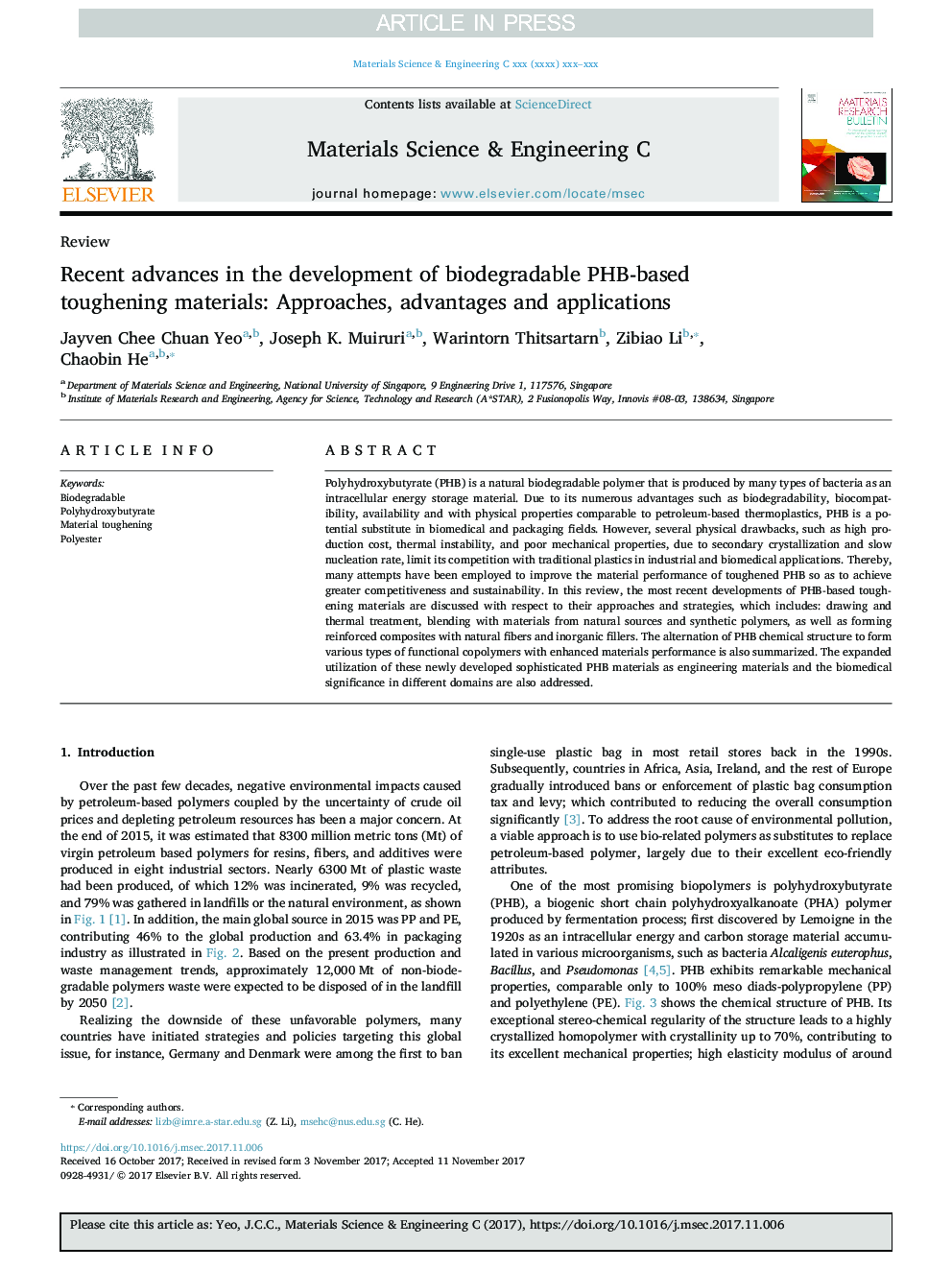| Article ID | Journal | Published Year | Pages | File Type |
|---|---|---|---|---|
| 11006746 | Materials Science and Engineering: C | 2018 | 25 Pages |
Abstract
Polyhydroxybutyrate (PHB) is a natural biodegradable polymer that is produced by many types of bacteria as an intracellular energy storage material. Due to its numerous advantages such as biodegradability, biocompatibility, availability and with physical properties comparable to petroleum-based thermoplastics, PHB is a potential substitute in biomedical and packaging fields. However, several physical drawbacks, such as high production cost, thermal instability, and poor mechanical properties, due to secondary crystallization and slow nucleation rate, limit its competition with traditional plastics in industrial and biomedical applications. Thereby, many attempts have been employed to improve the material performance of toughened PHB so as to achieve greater competitiveness and sustainability. In this review, the most recent developments of PHB-based toughening materials are discussed with respect to their approaches and strategies, which includes: drawing and thermal treatment, blending with materials from natural sources and synthetic polymers, as well as forming reinforced composites with natural fibers and inorganic fillers. The alternation of PHB chemical structure to form various types of functional copolymers with enhanced materials performance is also summarized. The expanded utilization of these newly developed sophisticated PHB materials as engineering materials and the biomedical significance in different domains are also addressed.
Related Topics
Physical Sciences and Engineering
Materials Science
Biomaterials
Authors
Jayven Chee Chuan Yeo, Joseph K. Muiruri, Warintorn Thitsartarn, Zibiao Li, Chaobin He,
